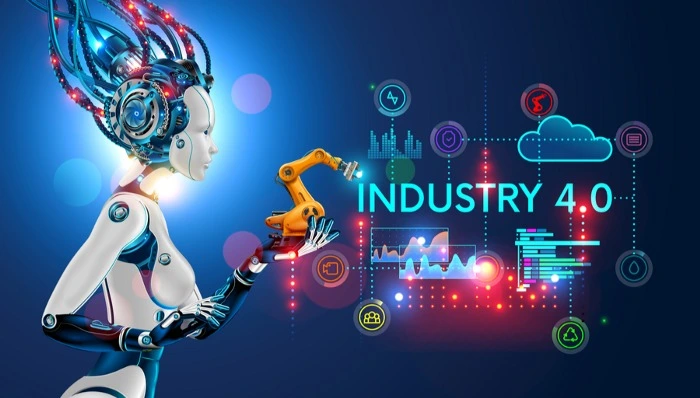Explanation of Technologies Transforming Industry 4.0 - The Fourth Industrial Revolution.

The Fourth Industrial Revolution (Industry 4.0) represents a significant change in our way of life and work. It differs from the previous revolutions because the fourth industrial revolution challenges our ideas about what it means to be human. According to the World Economic Forum, Industry 4.0 entails a major transformation in how we live, work, and interact with one another, driven by new technologies.
Industry 4.0 involves a combination of innovations such as artificial intelligence (AI), the Internet of Things (IoT), 3D printing, quantum computing, genetic engineering, virtual reality, robotics, and more. Examples of these changes can be seen in GPS navigation suggesting routes, personalized Netflix show recommendations, voice-activated assistants like Siri, and Facebook's facial recognition capabilities. .
Now, let's talk about five important technologies that are changing Industry 4.0
Big Data and Machine Learning
Companies now have the capacity to utilize vast amounts of data, surpassing previous capabilities. The true value, however, lies not in quantity but in the insights organizations can glean from it. Through machine learning, this data can be utilized for predictive analysis and to support informed decision-making.
Blockchain Technology
Blockchain is a secure method of sharing data without intermediaries. Originally developed for secure digital money transfers, it has evolved into a powerful tool for various applications. It is anticipated that Blockchain will revolutionize sectors including finance, legal services, healthcare, e-commerce, and more. Its decentralization ensures security and transparency for tasks such as maintaining health records and facilitating secure fund transfers.
Artificial Intelligence (AI)
AI refers to machines' ability to learn and make intelligent decisions, fundamentally altering customer support interactions. AI-powered chatbots are transforming customer-business interactions, enhancing overall customer experiences. AI also underpins trends like facial recognition, voice assistants, and continuous support services.
Virtual Reality and Augmented Reality
Virtual Reality creates immersive experiences via VR headsets, simulating real-world scenarios. Augmented Reality blends digital and physical realities. Apps like Pokémon Go and L’Oréal’s makeup app showcase the impact of AR/VR in the mobile app space. Additionally, websites are utilizing VR and AR to deliver unique, immersive user experiences. These technologies offer businesses benefits such as increased engagement and more memorable interactions.
Internet of Things (IoT)
IoT technology bridges the gap between the digital and physical realms. It can be applied to everyday items, from home automation devices to medical wearables. IoT has revolutionized multiple industries, connecting billions of devices to the internet. This data collection helps businesses understand customer perceptions and refine marketing strategies.
These technologies present significant opportunities and challenges across industries. They have the potential to drive innovation and reshape societal norms. Such technologies are poised to play a defining role in the ongoing industrial revolution.

